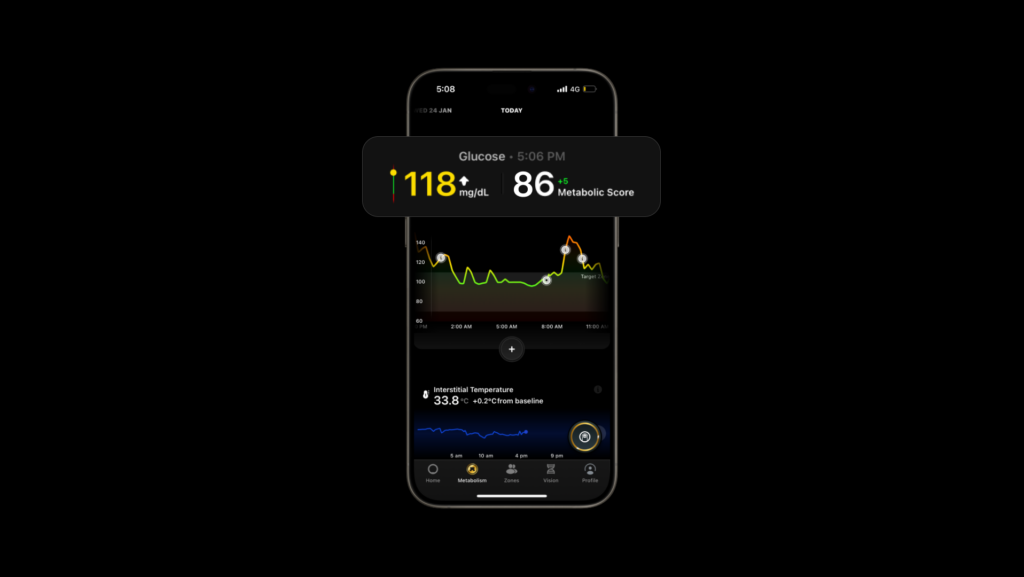At one point or another, we’ve all given in to couch potato syndrome. Sometimes the lure of a comfortable chair, the television blaring your favourite programme and that bag of crisps are too good to turn down. The long term ramifications of a sedentary lifestyle devoid of exercise are well documented. (6) Conversely, exercising excessively—or overtraining—has detrimental effects on your health too.

Highlights
- Each individual has their own stress capacity; when one’s training load goes beyond this tipping point, they are considered overreached or overtrained,
- Overtraining Syndrome (OTS) is an extreme form of non-functional OR characterised by a longer duration of the decreased performance (over two months) and can be triggered by high-intensity exercise, monotonous training, poor nutrition etc,
- Rest and recovery are crucial to any training programme. Muscular glycogen (energy stores) that were depleted during exercise can be replenished and damaged muscle tissue repaired during periods of recuperation.
It’s a misconception that only professional athletes are susceptible to overtraining; anyone can suffer from it. Whether you’re a fitness enthusiast or just embarking on your fitness journey, habits dictate whether you’re likely to experience symptoms of overtraining. If you’re too sore to get out of bed in the morning or have hit the metaphorical wall and can’t train like you used to, you’ve likely overdone it. Here, we present a definitive guide on overtraining, signs to look out for and what you can do to prevent it.
What is overtraining?
Individuals who exercise regularly reap the benefits—from a reduced risk of chronic disease to improved mood, sex drive and sleep. Over time, regular training aims to increase our performance. Our bodies have a dose-response mechanism with exercise: performance is enhanced by increasing the training load (dose), accompanied by adequate rest. (1) However, each individual has their own stress capacity; when one’s training load goes beyond this tipping point, they are considered overreached or overtrained. (11) Beyond this point, training is of little consequence and does more bodily harm than good.
Overreaching (OR) is an accumulation of training load that leads to a decrease in athletic performance requiring days to months of recovery. The European College of Sport Science defines two types of OR: functional, or short-term OR and non-functional, or long-term OR. (12) Functional OR can be beneficial—it is prescribed to boost athletic performance via a process called super-compensation. (13) Under super-compensation, training load is periodically increased, which leads to a temporary dip in performance that lasts between days and weeks, followed by a sufficient recovery period. During recovery, the body compensates for the stress placed on it. The individual rebounds and enjoys overall improved performance and adaptation. Non-functional OR begins with intense training and is not followed by adequate rest. This leads to a prolonged decline in performance that can last for months. It is usually accompanied by negative psychological and neuroendocrinological (hormone secretion) symptoms. Individuals can, however, fully recover given a period of essential rest and recuperation.
Overtraining Syndrome (OTS) is an extreme form of non-functional OR characterised by a longer duration of decreased performance (over two months), more severe symptoms and an additional stressor, namely psychological or social. OTS is caused by an imbalance between exercise-induced fatigue and sufficient post-exercise rest and recovery. OTS can be triggered by high-intensity exercise, monotonous training, abrupt increases in training-volume load, training multiple times per day or inadequate or poor nutrition. (12) The term OTS is used synonymously with terms such as chronic fatigue and staleness.
Burnout is not to be confused with OTS—people who are burnt out lose motivation, whereas individuals suffering from OTS may still possess high levels of motivation. (10) In a vicious cycle, they observe a performance decline and ramp up training intensity, frequency and volume in order to achieve greater results, neglecting rest and recovery. Individuals with OTS or non-functional OR can only be diagnosed after a period of complete rest. The time taken to recover determines which clinical condition you have, not the degree or type of symptoms. (10)

Signs of overtraining
Our bodies react to overtraining in numerous physiological ways. If you experience any of the following symptoms, you’ve likely gone past your tipping point. Be on the lookout for:
You may experience a performance plateau
You may notice that despite your best efforts, you haven’t been seeing any improvements in performance lately. Halted progress presents itself in your strength, agility and endurance. During workouts, you may tend to feel exhausted faster, a condition called premature fatigue. (2)(3)(4) One tends to persistently feel washed out, either during or after a workout. (16)
You’ve hit the inflammation station
Skeletal muscle makes up 40% of our body weight and is essential for movement and breathing. When we exercise, our muscles tear and require time to repair themselves. A day or two after a workout, it is completely normal to feel sore. However, should soreness persist past 72 hours, chances are that you’ve overtrained. (3) By overtraining, you are exacerbating muscle tears without giving your body time to recover. (14) High-intensity exercise places your body under immense stress, leading to inflammation, decreased muscle mass and eventually injury, which will sideline you for longer than expected. (15) You may also notice a recurrence of past injuries. (2)(4)
You’re not eating enough
Providing our bodies with the right fuel pre- & post-workout is essential. If you don’t, the body depletes its glycogen reserves to provide energy. Replenishment of glycogen (energy stores) and fluid are necessary to tolerate intense bouts of training. A diet lacking in carbohydrates and fluids decreases our capacity to tolerate physiological stress. Each gram (gm) of carbohydrate requires 3 gm of water to bind to muscle glycogen. (13) If you’ve lost your appetite, are eating and drinking poorly and experiencing unexpected weight loss (or gain), these are signs that you’ve overtrained. (2)(15)
You’re falling ill often
When you fall victim to infection and viruses on a regular basis, you may be suffering from OTS. Moderately intense exercise is known to improve immunity; however, high-intensity exercise impairs our ability to fight off infection. (10) During times of stress, our bodies release cortisol to boost our energy in response to stress (training in this case). Following intense exercise, cortisol suppresses our immune systems for several hours (immunosuppression). (7) This makes us more prone to infections, mild illnesses and upper respiratory tract infections (URTIs).
You’re resting heart rate has altered
Individuals who exhibit OTS may find that their heart rate stays high during the day. Heart rate variability measures the oscillation in between heartbeats—the higher variability you have, the more resilient you are to stress. If your heartbeat doesn’t drop between stages of high-intensity training, you likely have low heart rate variability. Your heart rate may take longer to reach its resting rate post-exercise. An altered resting heart rate occurs due to an increased metabolic load to meet the demands of training. (3)(4)
You’re not sleeping well despite training hard
While you sleep, your body performs functions to rebuild and grow. The pituitary gland secretes a growth hormone that has anabolic (synthesising) properties. During intense training periods, sleep is of vital importance for recovery. Lack of quality sleep is a major contributor to fatigue in athletes. If you are unable to sleep despite exercising, it could be due to neuroendocrine or nervous system imbalances caused by overtraining. Over time, inadequate sleep accumulates and has several more consequences: affecting your mood, reaction time, cognition and cardiovascular and neuroendocrine functioning.
You may experience agitation, anxiety, irritability or depression
(2) This results from an imbalance in our hormones and deteriorating mental health. Anxiety can impair sleep quality, which in turn affects recovery. An altered mood is thus a potential indicator of OTS. (7) In athletes, it can bring about apathy towards their goals and a loss of competitiveness. (10)
You missed your period
In women, hormonal changes caused by overtraining can impact their menstrual cycle—lower levels of estrogen cause missed periods. (8) If you miss your period for three consecutive months, consult your doctor. In overtrained males, several studies identify the ratio between levels of testosterone and cortisol as a potential marker of overtraining. A low ratio can be diagnostic of OTS. However, this ratio decreases while training regularly, and doesn’t necessarily indicate that an individual is overtrained. (12) Reduced testosterone is associated with diminished sex drive, increased visceral fat, loss in bone and muscle mass and a decrease in energy levels. If these sound familiar to you, examine your exercise regimen to determine whether it is the underlying cause.

How to prevent overtraining
Rest and recovery are crucial to any training programme. If you rest adequately in between your regimented workout schedule, you can avoid OR or OTS. Resting is essential for your body to increase protein content in muscle cells, and prevent muscle breakdown. Muscular glycogen (energy stores) that were depleted during exercise can be replenished and damaged muscle tissue repaired during periods of recuperation. Listen to your body. If you’re punching above your weight, take a step back.
Strenuous training programmes can lead to OTS, underscoring the importance of periodisation. (16) Periodisation entails “pre-planned, systematic variations in training specificity, intensity and volume, organised in periods or cycles with an overall program(me).” (10) Plan your workouts so that you increase the training load gradually, not abruptly. Reduce reps and avoid setting unrealistic goals for yourself. Mix high-intensity workouts with low-intensity ones, such as cross-training. Monitor your progress in training and focus on recovery.
Crucial to preventing OTS is balanced nutrition. A study of dietary patterns identified insufficient carbohydrate, protein and calorie intake as independent triggers of OTS (capable of causing OTS without the presence of other triggers such as poor sleep). (8) Sleep (or lack thereof) has many far-reaching health implications. It is vital to recovery after exercise and allows our bodies to repair and grow. (10)
Conclusion
While exercising is beneficial for our health, overtraining is harmful to our bodies and can put us out of commission for extended periods. On the spectrum of overtraining are three levels of intensity—functional overreaching (OR), non-functional OR and overtraining syndrome (OTS), all associated with a decline in performance. Functional OR is commonly used to boost athletic performance, where individuals suffer an initial dip, followed by rest and the body’s rebound mechanism. Non-functional OR and OTS are more debilitating; the period of performance decrement lasts longer and the road to recovery is longer too. Each individual has their own stress tolerance and thus their own reaction to overtraining. Overtraining affects not only our athletic performance but our tolerance for injuries, mood, sexual health and stress response as well. It is vital to observe any symptoms and focus on rest and recovery to treat and ease them. To prevent overtraining, periodisation of training programmes, interspersed with rest days, are hugely beneficial. Poor caloric intake is a direct trigger of OTS, thus proper nutrition, complete with all food groups, is essential to steer clear of overtraining. Finally, ensure good quality sleep so the body can repair and recover from gruelling training sessions.
Disclaimer: The contents of this article are for general information and educational purposes only. It neither provides any medical advice nor intends to substitute professional medical opinion on the treatment, diagnosis, prevention or alleviation of any disease, disorder or disability. Always consult with your doctor or qualified healthcare professional about your health condition and/or concerns and before undertaking a new health care regimen including making any dietary or lifestyle changes.
References
- https://www.webmd.com/fitness-exercise/what-to-know-about-overtraining#2
- https://www.mensjournal.com/health-fitness/12-signs-youre-overtraining/
- https://www.healthline.com/health/signs-of-overtraining#when-to-take-a-break
- https://www.womenshealthmag.com/fitness/a27562920/signs-of-overtraining-recovery/
- https://betterme.world/articles/how-to-recover-from-overtraining/







